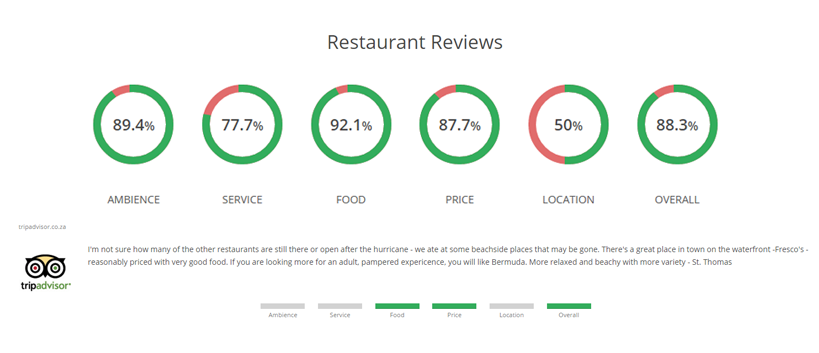How to Keep Your Restaurant Sentiment Analysis Well-Fed

When the team from London-based data analysis service GetSentiment developed a bleeding-edge system to measure the emotional baggage found in free text, they were missing just one thing: relevant data.
“We were looking for a data provider that would be able to give access to sufficiently large amounts of frequently updated mentions of brands,” recalls Viktor Pekar, who also serves as a researcher at the University of Birmingham. “Among other alternatives, we looked at various review sites, however they have very restrictive policies on how the data can be used, in particular many forbid any form of automatic analysis of their data.”
Ultimately, Pekar continues, “Webz.io turned out to be unique in that it works as a web search engine, but focuses specifically on forum sites and crawls a large number of them, which ensures sufficient volumes of user-generated content – as in, texts of potential interest for market research and brand monitoring, and at the same time imposes no restrictions on automatic analysis of the data.”
With access to the Webz.io, GetSentiment was able to demonstrate the power of its sophisticated algorithm for granular sentiment analysis. Most platforms only measure the overall emotional vibe of a textual blurb, but this one is capable of unprecedented granularity. GetSentiment analyses restaurant feedback to pinpoint customer reactions at the phrase level, organizing them into issues or “aspects” of the business.
The right data for the right analysis
With sufficient volume of user-generated content, restaurant managers can use GetSentiment’s platform to know how their customers feel about their businesses in general, and also how they feel specifically about individual parameters like the ambiance, service, food, price and location. This renders the content all the more useful to business leaders. Instead of merely seeing at a glance how people are reacting to their restaurants in general, now they can gain an understanding of their biggest opportunities for improvement specifically.
Also, while text analytics software can enable companies to filter valuable insights from huge volumes of online feedback far beyond what a human could read and understand, traditional sentiment analysis models can lose things in translation. A scrumptious meal ruined by rude service can be interpreted as neutral, leaving two important pieces of information for the business to be overlooked.
Smart sentiment parsing into different parameters, therefore, provides more useful insights for business leaders.
A model for scalable app specialization
Let’s remember, though, that GetSentiment isn’t a restaurant review data provider. It’s a sentiment measurement solution. They use the Webz.io API to collect customer feedback from the open web, and then the GetSentiment API processes it and spits out sentiment scores according to granular parameters.
“The application is meant to showcase the potential of web forum data for market research and customer experience analytics, as well as the capabilities of aspect-based sentiment analysis,” says Pekar. “In developing the app, we established a process of setting up searches on Webz.io, extracting and cleaning text segments relevant to a brand mention, which we can now extend to new industries.”
Indeed, using Webz.io’s easy yet highly sophisticated query builder, GetSentiment is able to replicate this process for any niche business vertical, whether it’s for the retail, hospitality, electronics, automotive or telecommunications industry – or anything else.
“In addition to the API, we have developed a self-service interface where users themselves can customize the natural language processing analyzers to their needs by uploading custom lexical resources,” says Pekar. “We also offer services on developing such customizations for our clients.
Evolving processes for measurement
Until relatively recently, a market researcher trying to help a network or chain of restaurants figure out why a certain location is struggling, for example, would have had to manually gather data, then sort and analyze it with hours of painstaking reading and tabulation. Manually gathered data might mean comment cards on tables, which some customers would notice, and few would fill out. It could mean paying to solicit opinions from people in the area. The cost was high, and the quality of the data was low.
Online reviews have emerged as the comment cards of the 21st century. These content posts often come from the people most impressed or most upset by an experience, even though the vast majority of customer experiences fall somewhere in the middle.
Because of the propensity for outliers, moreover, online reviews have to be aggregated and analyzed in order to yield useful insights. In this context, Webz.io’s data-as-a-service (DaaS) solution, which can export extracted data sets in several app-ready API formats, in addition to Excel files and RSS feeds, is a game changer.
Next-generation data tools
For application development companies that deal with processing data, GetSentiment’s use of Webz.io is a model that can be applied to any number of needs. Whatever your product’s data gaps are, you’ll be able to fill them with easily accessible content extracted from the open web.






